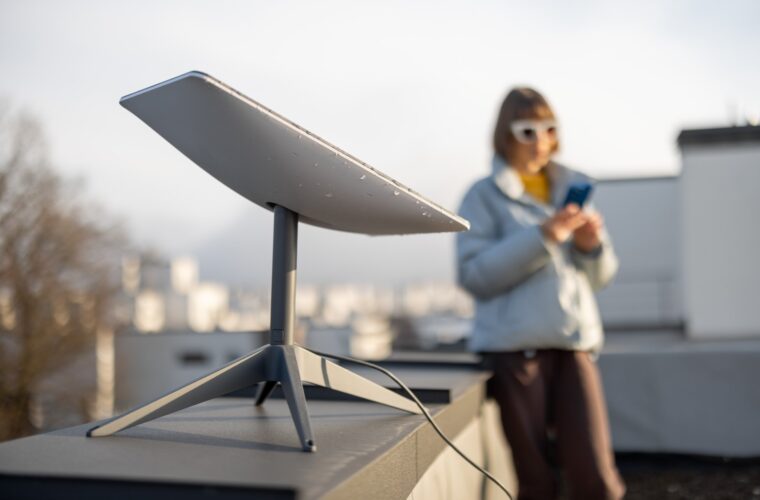Dr. Numa ISNARD has always been deeply passionate about space and the immense possibilities it holds for humankind. Serving as an attorney at the Paris Bar in France and a lecturer at the University of Paris Saclay, he established SPACEAVOCAT, Europe’s pioneering legal firm exclusively focusing on Space Law. Having been honored with the European Legal Award in Space Law for two consecutive years, including 2022, he generously offered his insights to us.
Who generally seeks knowledge about space law? In simple terms, who approaches you for services?
Our clientele is varied, spanning from space aficionados and startups to officials from government agencies, researchers, and stakeholders from private and national industries. Multiple sectors, whether they’re novices or experts in space, display a growing interest in the intricacies of space law.
With Starlink recently launching its 5000th satellite into low orbit, what’s your take on this venture?
Starlink, a subsidiary of SpaceX, is revolutionizing telecommunications with its groundbreaking technology. The concept and the achievements of Starlink are impressive. After all, who wouldn’t want global internet coverage? (Just a playful thought) Indeed, Starlink’s reach to previously inaccessible areas due to its huge satellite network is commendable. Nonetheless, monitoring their rapid advancements and their pricing strategy is crucial.
What is the global stance on tackling competition and potential space monopolies?
The surge of Starlink could imply a potential monopolization in low orbit. However, there are other actors in this segment, and, likely, national and international entities may eventually ensure competition, as multiple nations have stakes. In fact, today’s focus leans more towards international cooperation over rivalry. Still, the recent establishment of national space forces among several established space powers shows that states remain concerned about potential conflict, especially over low-orbit activities.
How pivotal is international law in our current space age?
Despite laying fundamental principles, the initial treaties established during the Cold War feel somewhat outdated today. For instance, they were established during times when the very concept of GPS technology, now commonplace with smartphones, was in its infancy. Contemporary regulations permitting launches are more about national laws. Still, this important regulation is not a blocking factor and even enables companies like SpaceX to innovate, especially with governmental and space agency backing.

What if there are mishaps?
If any nation approves a launch, and subsequently, it leads to any form of destruction, on the face of international law, the approving nation is accountable, but so is the private actor with a chain of liability due to licenses and contracts. According to international space law, liability for space activities encompasses two facets: strict liability for any damage on Earth and accountability for in-space damage due to fault from the operator. However, while terrestrial claims might result in lawsuits, the situation is more intricate in outer space.
As in the 2019 incident where ESA had to reposition its satellite due to a potential Starlink collision, how do we oversee low-orbit space?
That incident underscores Starlink’s dominance and highlights the imminent risks and the urgency for regulatory measures regarding space traffic control, potentially a mix of those used by the ITU (International Telecommunication Union) for spectrum and those used by civil aviation. Considering current global dynamics and competition, I’m more inclined towards a mix of national laws and universally accepted standards over UN-led international treaties. Contemporary challenges require swift and efficient solutions like the Artemis Accords. Striking the right balance in terms of permits and licenses is essential.
What would be the consequences for non-compliance with international space law?
At the moment, repercussions aren’t systematically stringent since international law is primarily designed to regulate relations between sovereign states. But it can lead to potential conflicts and at least intense diplomatic discussions.
How might satellite networks like Starlink influence military operations?
Satellite networks like Starlink may be used to bolster communication during military actions on Earth. However, introducing these technologies also brings up questions about the notion of weaponization of space. While international space regulations were designed to prevent the weaponization of outer space, the delineation between peaceful and militaristic use remains a contentious subject. That’s where national regulations are critical to control such use since, per international space law, states regulate the sector at the national level.
How are various nations adapting?
Taking the US as an example, countries are formulating local, regional, and international strategies. Initiating dialogues with various stakeholders, including SMEs and startups, and establishing industry standards for upcoming challenges is crucial.
In conclusion, what are your thoughts on this century’s broader space exploration trajectory?
Venturing into space in the 21st century embodies a visionary shift for our civilization. It transcends mere space missions. It encompasses constructing an economic and legal framework to sustain our terrestrial economies. The prospective lunar economy, for instance, provides promising avenues for the foreseeable future.

